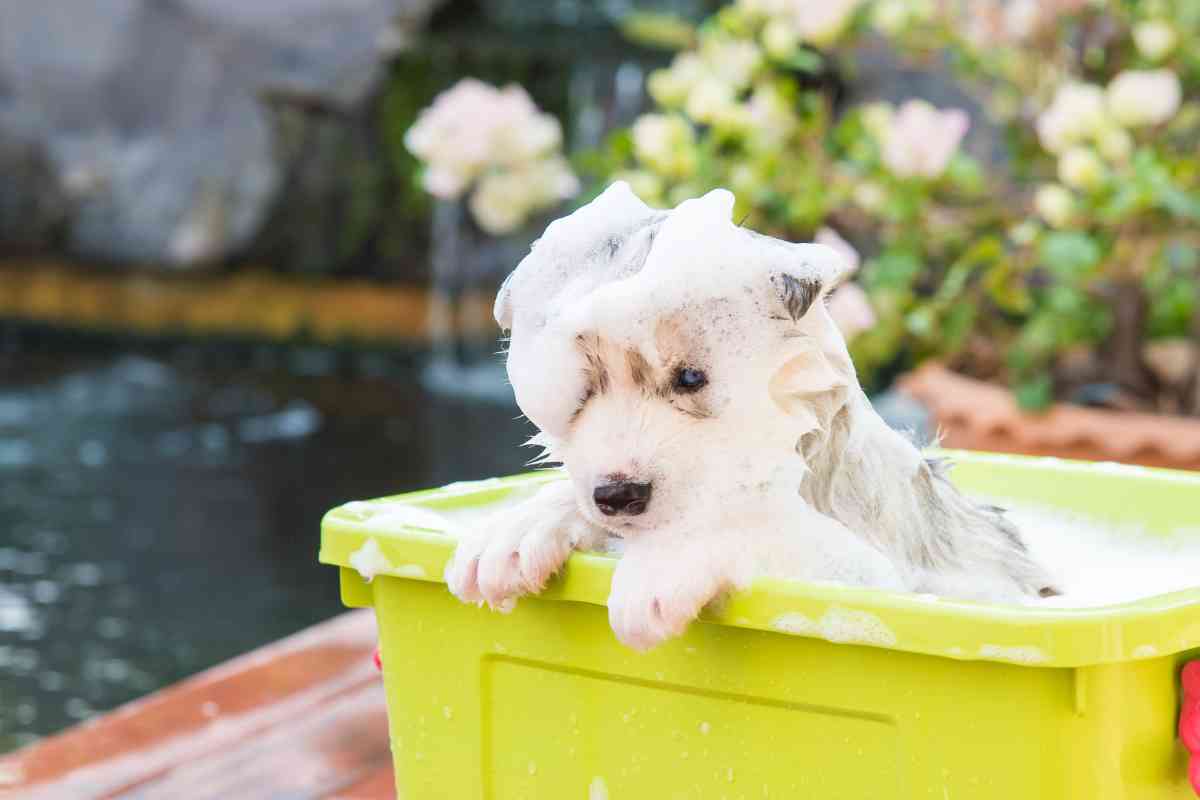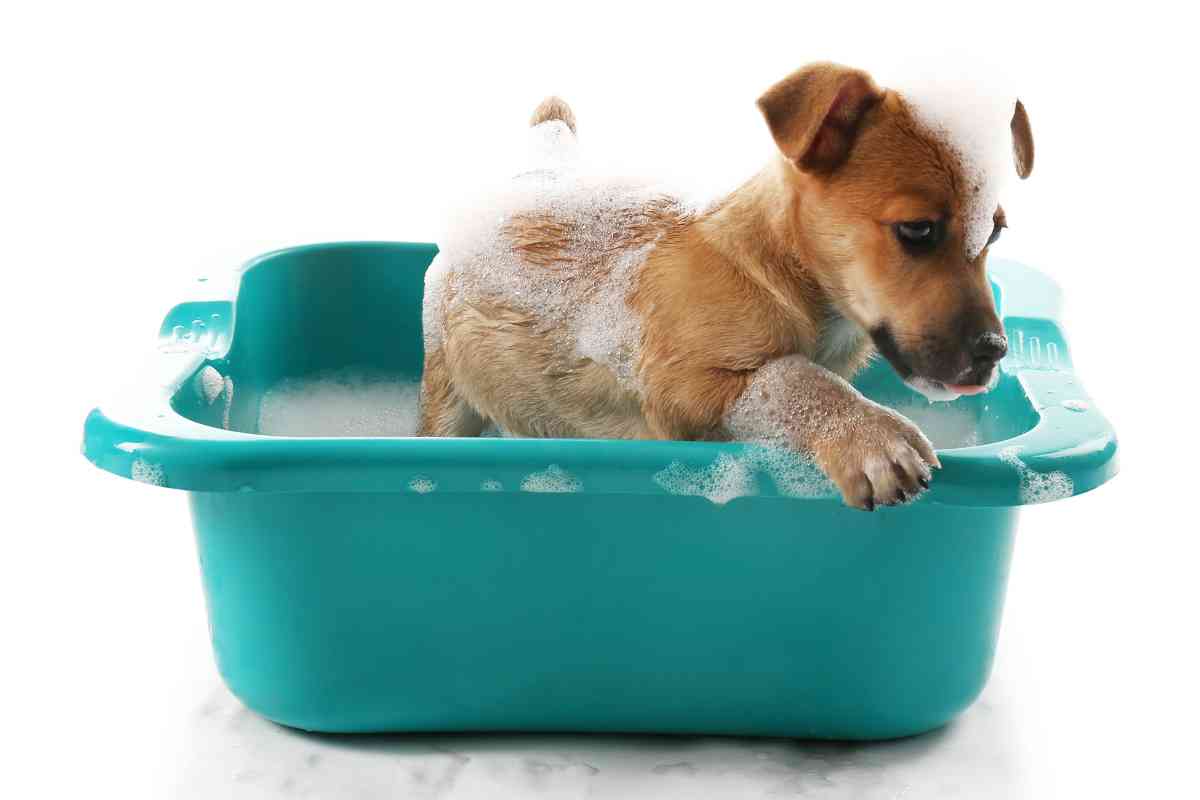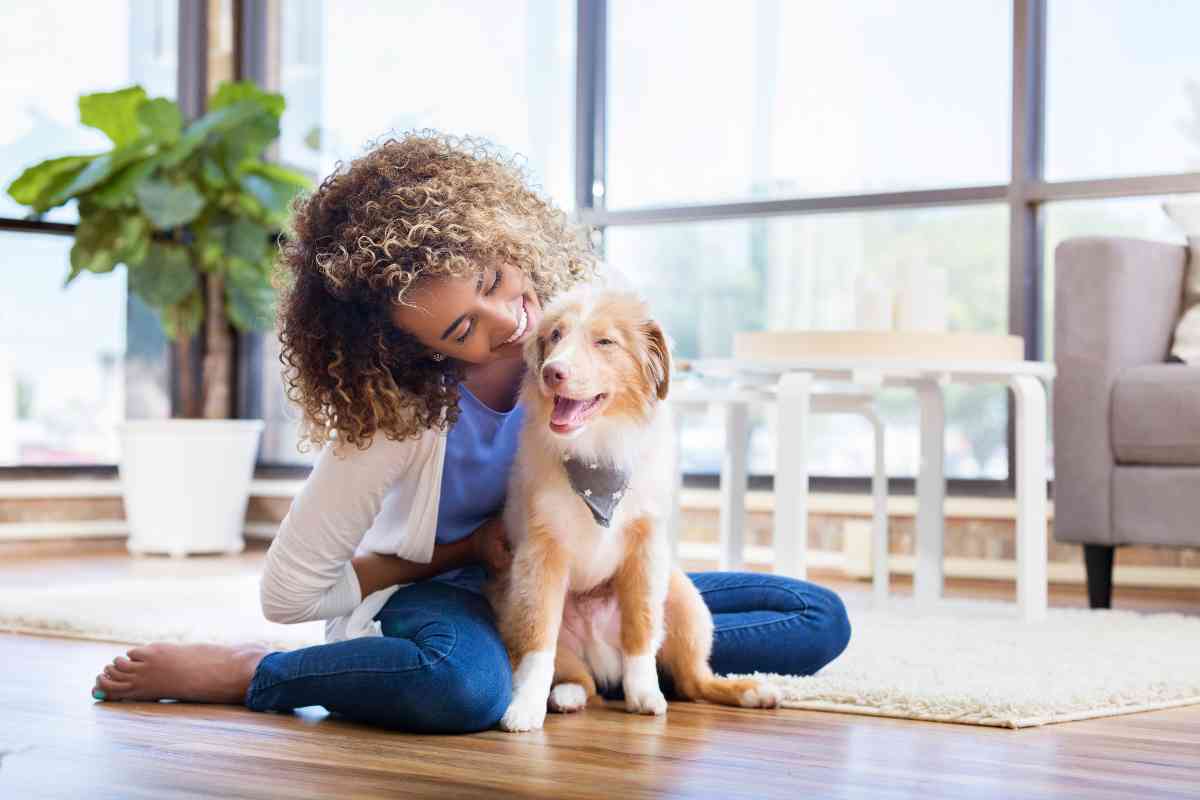Why You Shouldn’t Bathe Your Puppy As Soon As You Bring Them Home
Knowing when to bathe your puppy enhances the happiness and health of your puppy. But should I bathe my puppy when I bring her home? Our post has the answers.

Should I bathe my puppy when I bring them home?
You shouldn’t bathe your puppy immediately after bringing her home. You should wait for at least two weeks so they can settle. Bathing her too soon will change the scent she’s used to, making it hard for her to settle. Also, your puppy should be at least eight weeks old before you bathe her.
You’ve finally achieved something you’ve been planning for some time – owning your first puppy. And while owning a puppy can be exciting, it can be equally confusing, especially for a first-time puppy owner.
As a first-time puppy owner, there are a couple of things you will need to figure out, and you should be very careful about the decisions you make.
For instance, you will need to figure out what, how and when to feed your puppy.
You may also be wondering what time is best for your puppy to sleep. Also, you may be confused as to whether to bathe your puppy or not after bringing it home.
Well, we’ve got you covered.
In this guide, we will focus on the issue of bathing your puppy. We will answer the question of whether you should bathe a puppy after bringing it home and how often to bathe a puppy. We will also give you tips on how to bathe a puppy properly.

Can You Bathe a Puppy After Bringing It Home
Once you get home with your puppy, you may be tempted to bathe her right away. However, it’s not advisable to do so. You shouldn’t bathe a puppy until it’s at least two months or eight weeks old.
The reason behind this is that puppies tend to have issues self-regulating their body temperature. So, if you bathe her when she’s very young, she may end up getting chilled, which can lead to respiratory issues.
Besides getting chilled easily, water may also get into the lungs of young puppies during their first bath. And, this can be extremely dangerous.
Furthermore, this experience can be traumatizing to your puppy, making it develop an extreme fear of bathing. So, it will be highly advisable to wait until your puppy is two months old.
And if it’s not extremely dirty and smelly, you can wait until they are at least three months old.
And, even if your puppy may be at least two months old, it wouldn’t be advisable to bathe her immediately after you bring it home. Instead, you should give the puppy at least two weeks or so to settle in.
When you wash a puppy immediately, you will change the scent they are used to. Not only are they away from their litter mates for hte first time, but they no longer smell them, either. Consequently, it may be challenging for the puppy to adjust to the new environment.
Furthermore, bath time and grooming isn’t always the most enjoyable thing for most pets. So, it will be advisable to wait until your new furry friend can trust you.

How Often Should You Bathe a Puppy?
As we’ve mentioned above, you shouldn’t bathe your puppy immediately after bringing it home. Instead, you should first give it some time to settle in.
Also, you should only do it if the puppy is at least two months old.
From there, you can now proceed to give your puppy its first bath.
So, how often should you be bathing your puppy? Ideally, you should be bathing your puppy once per month. However, the actual frequency will depend on various factors like the dog’s coat, its lifestyle, its breed, and its age. Let’s take a closer look at each of these factors.
Puppy’s Coat Type
Your puppy’s coat type will determine how often you should bathe her. Generally, if your puppy has a short coat, then it will require bathing less frequently.
A single bath once a month should be enough for a puppy with a short coat like the harrier, basenji, whippet, Dalmatian, miniature pinscher, and Boston terrier.
On the other hand, a puppy with a long coat like a Collie or Maltese may need more care. Long coats tend to pick up debris, dirt and dust more easily, as the dog moves around. Therefore, a puppy with such a coat may require bathing more frequently.
But, you can also opt to
I should also point out that some hairless dog breeds like the Chinese Crested may require more bathing than puppies with long coats. According to experts, hairless dog breeds may need a bath every week.
Health Status
Your dog’s health status will also determine how often you should be bathing it. If your puppy suffers from a particular health condition, then your veterinarian or groomer may recommend that you reduce the number of bathes.
Also, some health conditions may cause the puppy’s coat to emit a foul smell, meaning you may also be forced to increase the bathing frequency so that you can eliminate the stench.
At the same time, if you suffer from allergies, then there’s a high chance that you will react to your puppy’s dander.
In such a case, you will have to increase the bathing frequency to weekly, so that you can manage the dander. By doing so, you will reduce these dander-triggered allergic reactions.

Dog’s Lifestyle
Your dog’s lifestyle also has a bearing on how often you bathe your puppy.
For instance, if your puppy spends the majority of its time outside hunting in muddy waters, playing in lakes, or herding cattle all day, she will pick up more dirt and debris, compared to pups that spend the majority of their time indoors. Consequently, such a puppy will need more baths.
The most important thing is to observe the smell and condition of your puppy’s coat and then bathe them as is often necessary as opposed to bathing them based on a particular schedule.
Simply put, you should only bathe your puppy when necessary.
Bathing it too often may strip oil from its skin, eventually undermining the quality of its coat. And as you may probably know, a dog’s coat plays a vital role in insulating it against cold.
At the end of the day, you should only wash your puppy if you can longer hug it. And, freshening its coat doesn’t always mean you should wash it.
Instead, you can opt for other lesser-intrusive measures like brushing.
How to Bathe a Puppy
At this point, you now have a better idea of when to bathe your puppy after taking her home. Also, you now know how often you should bathe your puppy. But, how do you go about it? How do you bathe a puppy?
Well, bathing your puppy is not as challenging as it may appear. However, if it’s your first time, it’s perfectly normal to be confused.
And, we are here to clear things up. Here’s how to bathe your puppy in six easy steps.
Gather the Required Supplies
First, you will need to gather the necessary supplies. For this task, you will need a
Make sure you purchase shampoo specifically designed for puppies since their fur and skin have a different pH balance than humans. Bathing a dog using human shampoo can lead to irritated, dry skin.
Select a Spot
Once you’ve gathered the necessary supplies, you should now choose a spot where you will bathe the puppy.
A utility sink, deep kitchen sink or bathtub are all ideal spots for bathing your puppy. Regardless of the spot you choose, make sure you don’t leave her unattended. She could jump out and suffer injuries in the process.
Wet the Puppy
After placing the puppy in the sink or bathtub, you should first give her a treat. By giving them a treat, she will associate the bathing process with something positive.
Also, a treat will help to distract her from the water.
From there, you should then use a sink sprayer, cup or showerhead to wet your puppy evenly with lukewarm water. It’s not advisable to use hot water since it may end up scalding the puppy or stripping oils from its skin.
Apply Shampoo
After getting your puppy uniformly and completely wet, you should now proceed to apply shampoo. Squirt some shampoo onto your palms and rub it evenly over her fur until it forms a lather.
While applying the shampoo, make sure you avoid the ears, eyes and mouth. If it gets into these areas, you will have to wash it out, since it may cause infections once it’s trapped in there. And as you may expect, your puppy won’t enjoy this experience.
Rinse
Once you’ve finished applying shampoo everywhere, you should now proceed to give your puppy a thorough rinse. Ensure you rinse out all the shampoo.
You can tell whether you’ve rinsed out all the shampoo by checking the color of the water. If the water runs clear, then you’ve rinsed out all the shampoo.
But if the water appears soapy, then you still have some work to do. If some shampoo remains on the coat, it will irritate her skin.
Dry Your Puppy
Once you’ve finished rinsing your puppy and gotten rid of all the shampoo, it’s now time to dry her. To do so, you should give her a blow dry.
You can use a handheld blow dryer for this work. Make sure it’s on a low setting and you do it gently.
From there, you should then
Key Takeaways
- Bathing your puppy is an important part of taking care of them
- You shouldn’t bathe your puppy immediately after taking them home
- You should only bathe a puppy when it’s at least two months old
- You need to be bathing your puppy at least once every month